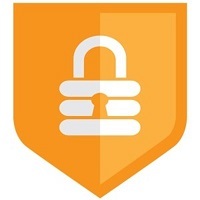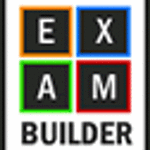What Is Exam Software?
Exam software, sometimes referred to as test or assessment software, is a type of computer program made especially for making and delivering tests. It gives teachers, trainers, and organizations a digital platform to design, administer, and grade tests and assessments. By doing away with the conventional pen-and-paper testing approach, this kind of software streamlines and increases the efficiency of the entire process.
Exam software's primary goal is to make testing easier for teachers and examiners while yet giving students an intuitive experience. Multiple-choice, true-false, and other question kinds can be created and scored with it. Additionally, multimedia components like pictures, videos, and audio snippets can be used to improve the test experience.
Exam software's capacity to create randomized questions from a pool of pre-written questions is one of its primary benefits. This reduces the possibility of cheating by guaranteeing that every student receives a different set of questions. It is a useful tool for time-bound exams like certifications and standardized tests because it provides time limitations for both the entire exam and each question.
Exam software also provides sophisticated reporting and analytics features that let instructors and trainers monitor student development, spot knowledge gaps, and decide on future lessons based on data. Exam software comes in a variety of forms on the market, from cloud-based to on-premise options, and with a range of price structures, including one-time or subscription-based.
To make sure you choose the best exam software, it is essential to evaluate your unique needs and requirements, including the number of users, test types, and budget, before making your choice.
What Are The Recent Trends In Exam Software?
Exam software has grown dramatically in recent years, keeping up with the fast-paced digital landscape and meeting the changing needs of both instructors and students. As a buyer of exam software, it is critical to stay current on industry developments in order to make an informed purchase.
Here are some recent trends in exam software that you should be aware of.
1. AI Integration: As AI technology advances, many exam software now includes AI algorithms capable of accurately analyzing and scoring exams. This saves educators time and effort while also providing more objective outcomes.
2. Online Proctoring: As online learning grows more popular, the demand for remote proctoring has grown. Exam software now includes a variety of proctoring tools such as ID verification, facial recognition, and screen recording to assure the accuracy of online exams.
3. Mobile Compatibility: With the majority of students using smartphones, exam software that works with mobile devices is becoming increasingly popular. This allows students to take exams on the fly, which is more convenient and flexible.
4. Personalization: Exam software now includes individualized assessments to meet the particular needs of pupils. This includes adaptive testing, which adapts the difficulty based on the student's performance, as well as tailored exams that focus on specific learning objectives.
5. Data Analytics: Another major trend is the use of data analytics to gain insights into student performance and exam efficacy. This data can assist instructors in identifying areas for improvement and making data-driven decisions on their teaching techniques.
6. Gamification: To engage students and make exams more interactive, exam software now includes gamification components like points, badges, and leaderboards. This not only improves the exam experience, but also fosters healthy competition among pupils.
Benefits Of Using Exam Software
Exam software is a critical tool for modern educators and companies that administer frequent assessments and tests. This revolutionary program has a variety of features and benefits that ease the exam administration process and improve the overall experience for both test makers and test takers.
1. Time And Cost Savings: Using exam software provides considerable time and cost savings. This software allows you to prepare, administer, and grade exams digitally, which eliminates the need for paper-based exams. This saves money on producing and delivering exam materials while also reducing time spent manually marking exams. It also allows for faster test results, which reduces student wait times.
2. Increased Efficiency: Exam software improves and streamlines the entire exam procedure. It makes it easier and faster to prepare tests and assessments. You can also schedule tests ahead of time and enable automatic grading, saving time and effort. Furthermore, the platform includes data analytics and reporting functions to help you gain useful insights into student performance and identify areas for growth.
3. Flexibility And Customization: Exam software allows you to customize exams to meet your individual needs. You can design a diversified and complete evaluation by using a range of question kinds, such as multiple-choice, essay, and fill-in-the-blank. It also lets you define time limitations, randomize questions, and generate multiple versions of the same exam to ensure fairness during the testing process.
4. Improved Security: Exam software includes enhanced security safeguards, making it more secure than traditional paper-based exams. The program enables safe logins and prevents cheating by limiting access to other websites or applications during the exam. It also offers the option of creating randomized questions, which makes it impossible for pupils to share answers.
5. Increased Accessibility: In today's digital world, online learning and remote examinations are gaining popularity. Exam software allows students to take examinations from anywhere and at any time. It also includes accessibility features for students with disabilities, ensuring that all students have equal opportunity to take tests.
6. Simple To Use: Exam software is intended to be user-friendly, especially for people with less technical understanding. It has a basic and intuitive interface that educators and students will find easy to use. Most exam software includes tutorials and customer assistance to help with any problems or inquiries that may arise. Overall, investing in test software can benefit your organization or educational establishment by increasing exam efficiency, security, and accessibility. With its time and cost-saving capabilities, customization possibilities, and strong security measures, it is an invaluable resource for any institution wishing to improve its assessment process.
Important Factors To Consider While Purchasing Exam Software?
When it comes to selecting test software, there are a few important elements to consider in order to make the best option for your company or school.
Here are some crucial elements to consider when selecting the correct exam software:
1. Features And Functionality: The test software's features and functionality should be given top priority. It should provide all of the tools and options required for efficient exam creation, management, and administration. Look for features like question bank import, automated grading, configurable test formats, and connectivity with LMS.
2. Security And Integrity: Exams frequently contain sensitive information, thus ensuring the software's security and integrity is critical. Look for secure login systems, encrypted data storage, and anti-cheating measures such as question randomization and access limitations to other programs.
3. User-Friendly Interface: The software's interface should be simple to use and understand. This saves time and shortens the learning curve for both administrators and exam participants.
4. Compatibility: Make sure the exam software is compatible with the devices and operating systems used by your firm. This is especially critical if the tests will be administered remotely or via personal devices.
5. Support And Training: Look for exam software that provides dependable customer service and training opportunities for you and your team. This ensures that the onboarding process runs smoothly and that any technological concerns are rectified swiftly.
6. Customization Options: Each organization has distinct requirements, thus it is critical to select test software that can be tailored to your individual specifications. This could involve changes to exam forms, scoring systems, and reporting options.
7. Scalability: Consider your organization's future expansion and select exam software that can meet your needs as it expands. This prevents you from having to switch to a different software in the future.
8. Affordability: While it is critical to invest in dependable and feature-rich exam software, it should also be within your means. Compare the costs and features of various software to choose the best fit for your firm. Keeping these essential elements in mind allows you to make an informed selection when selecting test software that matches your organization's specific objectives while also increasing efficiency in the exam creation and administration process.
What Are The Key Features To Look For In Exam Software?
When looking for test software, it's critical to evaluate the major aspects that will make your experience smooth and efficient. These vital qualities will differ depending on your unique demands and usage, so it is critical to evaluate your options before making a purchase.
1. User-Friendly Interface: The initial consideration should be the exam software's user interface. It should be intuitive, simple to use, and visually beautiful. A cluttered or complex interface can be confusing and frustrating, resulting in an inefficient experience.
2. Question Banks And Customization: The capacity to generate and access a vast pool of questions is critical for test software. Look for software that has a variety of question kinds and allows you to submit your own or import questions from other sources. This will allow you to construct a diverse and tailored exam for your specific requirements.
3. Secure Testing: When conducting exams, security is of the utmost importance. Check that the program you use has strong encryption and anti-cheating capabilities in place. To ensure the integrity of your examinations, look for features such as randomized question ordering, limited internet access, and a lock-down browser.
4. Automated Grading And Results: The program should provide a built-in grading mechanism to save you time and effort while manually grading examinations. It should also provide detailed and user-friendly reports on each student's performance, making it easy to examine the data.
5. Compatibility And Accessibility: The test software should be compatible with many devices and operating systems, allowing students to take exams on their preferred device. It should also include accessible features for students with disabilities, such as screen readers and changeable text sizes.
6. Customization Options: Look for software that allows you to tailor the platform to your brand and needs. This can involve adding your logo, modifying the colors and fonts, and designing a custom login page.
7. Collaborative Features: If you have a team of teachers or collaborators, look into software that includes collaborative features. This can include the option to develop and share examinations with others, track modifications, and offer feedback for one another.
8. Technical Assistance And Updates: Ensure that the program has reliable technical assistance and regular updates to repair faults or add new features. This will keep your test software up to date and running efficiently. Keeping these crucial aspects in mind allows you to make an informed decision when selecting test software. When making your final decision, remember to examine your specific requirements, budget, and the software provider's reputation.
Why Do Businesses Need Exam Software?
In today's fast-paced and competitive business environment, it is critical for businesses to constantly upgrade and develop their employees' skills and expertise. One approach to accomplish this is to administer periodical exams and evaluations to check their comprehension and progress. Businesses, on the other hand, may find it tiresome and time-consuming to organize and manage these exams manually.
Here is where exam software comes into play. It provides a more efficient and streamlined method of administering exams, making it an invaluable resource for businesses of all sizes. First and foremost, it eliminates the need for paper-based exams, saving time while also reducing the organization's carbon imprint. Furthermore, test software enables firms to construct and deliver exams rapidly and easily.
With a few clicks, they may create various types of questions, establish time limitations, and even randomize questions to ensure fairness. This not only saves time, but also reduces the possibility of human error throughout the exam creation process. Furthermore, exam software enables firms to centralize exams and assessments. This implies that all exams can be accessed and administered from a single platform, simplifying the monitoring and tracking of each employee's progress.
It also provides a secure and structured way to save exam results and data for future reference. Another significant advantage of exam software is that it provides flexibility and convenience to both the organization and employees. Exams can be taken remotely, allowing employees to complete them at their own leisure and from any place, reducing the hassle of scheduling in-person exams.
Furthermore, exam software offers rapid and automatic grading, allowing employees to receive immediate feedback on their performance. In conclusion, organizations require test software because it provides a cost-effective, efficient, and simple solution to their assessment demands. Organizations can use this technology to save time, decrease costs, and improve their workers' overall learning and development processes.
How Much Time Is Required To Implement Exam Software?
The implementation time for exam software varies based on the specific tool and the organization's requirements. On average, it can take between a few days and a few weeks to fully implement exam software.
When estimating implementation time, consider the following factors:
1. Features And Customization: If the test software includes a variety of features and modifications, it may take longer to set up and setup. This is because each feature and customization must be extensively vetted before implementation.
2. User Experience: Implementing test software that provides a consistent user experience, including straightforward navigation and a user-friendly interface, will shorten implementation time. However, if the software is sophisticated and requires substantial training, the implementation process may take longer.
3. Integration: If the exam software needs to be integrated with other systems, such as learning management systems or student information systems, it may take more time to set up and test.
4. Data Import And Migration: If the business has current data, such as student records and exam questions, that must be transferred into the new software, the migration process may take some time to complete.
5. Training And Assistance: Proper training and assistance are essential for the successful installation and acceptance of exam software. The time necessary for training and support varies according to the complexity of the program and the needs of the company. To facilitate a smooth transition to the new exam software, it is advised that adequate testing and troubleshooting time be allotted during the implementation phase.
What Is The Level Of Customization Available In Exam Software?
Exam software provides a wide range of customization possibilities to meet the unique requirements of various educational institutions and businesses.
The level of customization offered varies depending on the software supplier, but here are some common options you may expect to find:
1. Branding And Design: Most exam software allows you to include your organization's logo and branding elements to provide a more personalized experience for your candidates. You can also change the color scheme, typefaces, and layout of the exam interface to reflect your brand's image.
2. Question Bank: Customizing the question bank is an important part of exam software. It lets you to create and edit questions, organize them into categories and subcategories, and assign difficulty levels. You can also use multimedia components like photographs, movies, and audio files to make the questions more interesting.
3. Exam Settings: Exam software allows you to customize various exam settings based on your needs. You can choose the time limit, amount of questions, and passing score, as well as enable or disable features like question randomization, answer shuffling, and more.
4. Access And Security: Exam software gives you control over the access and security of your tests. You may control who can take the test, set passwords, and limit the number of attempts. It also includes features like session timeouts, IP restrictions, and secure browser options to prevent cheating.
5. Reports And Analytics: Customizable reports and analytics are critical for monitoring candidates' progress and performance. Exam software allows you to generate a variety of reports to examine results on an individual or group basis. You can also tailor the data fields and formats to your specific reporting requirements.
Which Industries Can Benefit The Most From Exam Software?
Exam software is a versatile tool that may help a wide variety of sectors and enterprises. From educational institutions to government agencies and corporations, there is a growing demand for fast and streamlined exam processes.
But which industries will profit the most from exam software? Let us explore deeper into this question.
1. Education: The education sector is probably the most obvious area that may profit from exam software. With the growing use of technology in today's classrooms, many schools and institutions are exploring for ways to shift from traditional paper-based tests to online evaluations. Exam software provides a complete solution for developing, administering, and grading exams, making it an invaluable resource for schools and other educational institutions.
2. Corporate Training: In today's fast-paced corporate world, ongoing learning and skill development are essential for being competitive. Corporate training programs frequently include periodical assessments to evaluate employee progress. Exam software can streamline the process by allowing trainers to prepare and deliver tests online, evaluate employee performance, and provide individualized feedback. This saves time and resources while also ensuring accuracy and consistency in the review process.
3. Certification And Licensing Bodies: Exam software can also be very useful in industries that require certificates or licenses, such as healthcare, finance, and law. These organizations require a dependable and secure platform for administering tests and ensuring the legitimacy and credibility of their credentials. Exam software has features such as randomized questions, secure proctoring, and result analysis, making it an excellent choice for certification and licensing organizations.
4. Government Agencies: Government agencies frequently have stringent procedures for hiring and promoting staff, which include taking written tests. Exam software allows for the digitization of the entire exam process, eliminating the burden of paperwork and human grading. Furthermore, capabilities like as remote proctoring and fast result generating make it a feasible choice for large-scale exam administration.
5. Human Resources Departments: Hiring the proper people is critical to the growth and success of any firm. Human resource departments might profit from exam software by employing it to perform pre-employment tests. This enables businesses to evaluate candidates objectively and make sound hiring decisions. Exam software also provides capabilities such as candidate verification, anti-cheating techniques, and data analytics to help in the recruitment process.
Conclusion
To summarize, selecting the appropriate exam software for your firm necessitates considerable study and investigation. It is critical to thoroughly grasp your individual needs and compare them to the features and functionality provided by other software solutions. Some important considerations for making your final decision include the software's simplicity of use, customization options, security measures, compatibility with various devices, and technical assistance given by the seller.
In addition, examine the software's scalability and future upgradeability to match your organization's changing needs. Furthermore, thoroughly test the software before purchasing to confirm that it matches your expectations and improves your exam experience. Finally, don't forget to study reviews and solicit comments from current program users to gain an understanding of their experience and happiness.
By following these guidelines, you can make an informed selection about the best exam software for your organization's needs and budget. Thank you for taking the time to read this buyer's guide, and we hope it helped you find the best exam software.






















